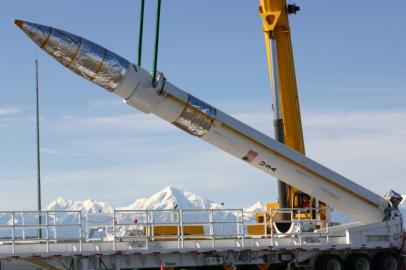"Missile Defence and the Arctic"

See The Simons Foundation's Disarming Arctic Security page for briefing papers on military policies and practices in the Arctic region by Ernie Regehr, Senior Fellow in Arctic Security at The Simons Foundation.
Missile Defence and the Arctic
June 4, 2013
Ballistic missile defence installations in the Arctic may have little direct bearing on day-to-day security concerns and arrangements there, but it would be naïve to assume that the irritations that missile defence visits on strategic relations among Russia, the United States, and NATO, and even China, can be kept fully out of Arctic security dynamics.
The most basic definition of a security community of independent states within a defined region is that there exists a reliable expectation that the states within that region will not resort to war to prosecute their disputes. Put another way, such a “pluralistic security community … [is] a transnational region comprised of sovereign states whose people maintain dependable expectations of peaceful change.” That is certainly a widely affirmed expectation, even if not yet a guarantee, for the Arctic region.
But there is another characteristic of a security community that is less entrenched in the Arctic, namely, “the absence of a competitive military build-up or arms race involving [its] members.” There is no denying that there is currently a build-up of conventional military capacity within the region, and it is not yet definitively clear whether it will turn out to be a competitive build-up that undermines the growing expectation that change will be peaceful, or whether it will instead facilitate increased security cooperation and build capacity for more effective domestic and cross border support to civil authorities in search and rescue, and in monitoring regional activity and ensuring compliance with international regulations.
For current conventional military developments and deployments in the Arctic that remains an open question, but what about ballistic missile defence (BMD)? Key strategic BMD installations are in the Arctic – currently 26 US interceptor missiles at Fort Greely, Alaska and early warning radars at Clear, Alaska and Thule, Greenland. The primary BMD actors, the US and Russia, are Arctic states and there is currently little doubt at all that BMD is not a source of trust and harmony between them. The current focus of that BMD-generated mistrust is not the Arctic, rather it is the NATO missile defence program in Europe, but that European system gives four more Arctic states a direct stake in the controversy (NATO members Canada, Norway, Denmark, and Iceland). Of the five Arctic Ocean states, four are NATO states actively promoting BMD in Europe, and the fifth is Russia actively opposing it. The result has been to place distinct strain on post-Cold War strategic amity and arms control potential, and that in turn cannot but have an impact on efforts within the Arctic region to minimize tension and maximize political and military cooperation.
Continue reading...
Ernie Regehr, O.C. is Senior Fellow in Arctic Security at The Simons Foundation, and Research Fellow at the Institute of Peace and Conflict Studies, Conrad Grebel University College, University of Waterloo.